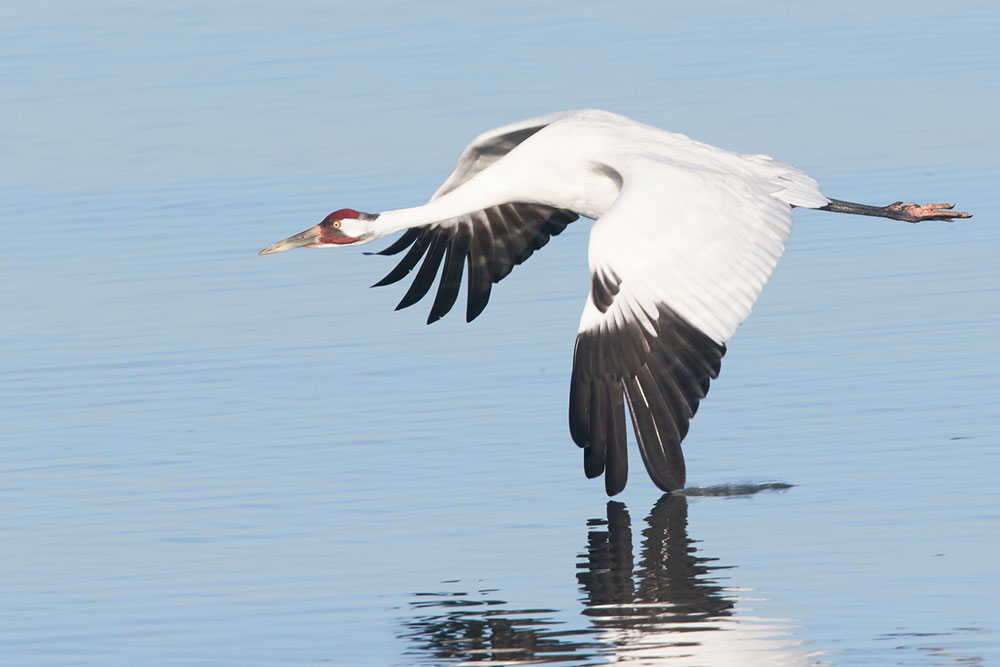Whooping cranes are making a population comeback as they fly back to their winter home at the Aransas National Wildlife Refuge in the Coastal Bend.
The highly endangered species edged close to extinction in 1941, when fewer than 20 of the birds remained in the wild. In 2017, the whooping crane population reached a record high of approximately 430 birds.
That record has been broken again. This year, 505 whooping cranes are expected to make their annual trek from the Wood Buffalo National Park in Canada to their winter home in South Texas.
The growing population of whooping cranes is indicated by the number of nests and fledglings. Wildlife officials at the Canadian park recorded 63 fledglings from 98 nests in 2017. This year’s nest count was 86 with an estimated 35-43 fledglings making it to Texas on the 3,000-mile migration.
The whooping crane is the most endangered of the 16 species of cranes in the world as well as the only group of naturally migrating cranes anywhere. They are also the tallest birds in North America, standing at a whopping 5 feet. They are a stunning, solid white, except for their black-as-ink wingtips, which are visible only when in flight.
Whooping crane baby boom

The population of the endangered whooping crane is growing in size. A record number of the majestic bird is migrating to the Coastal Bend, where it winters in the Aransas National Wildlife Refuge.